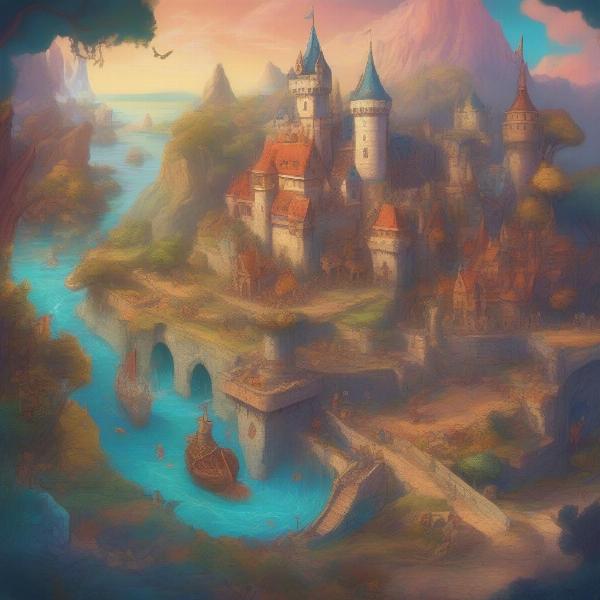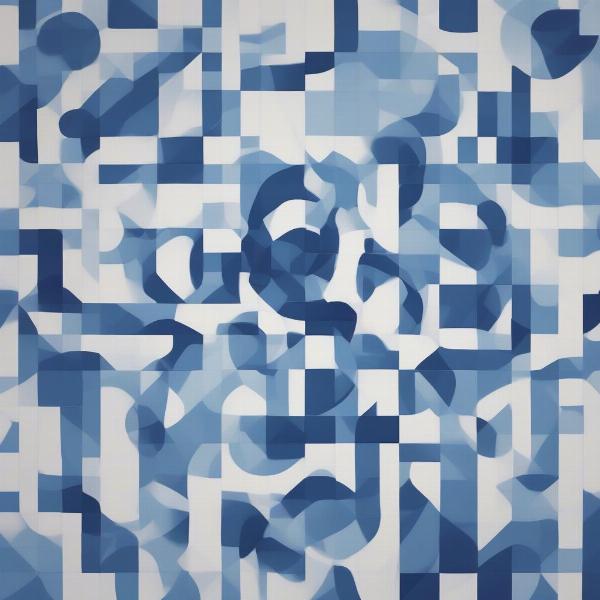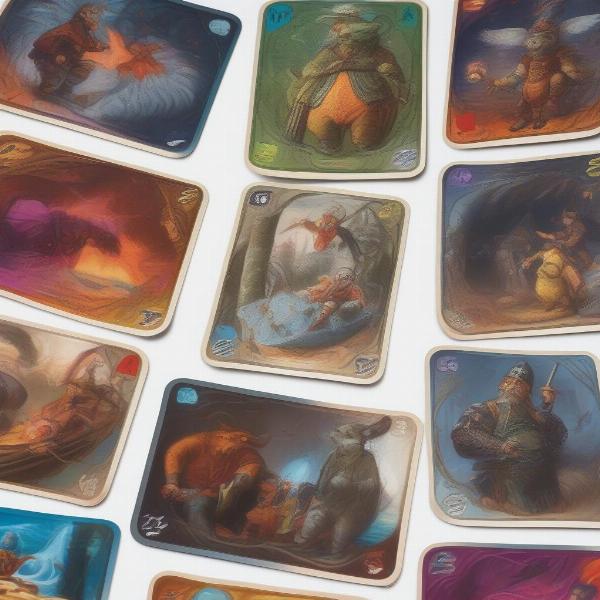Board games are more than just mechanics and strategy; they are often a portal to another world, and that immersion is heavily influenced by the artistry. At supremeduelist.blog, we believe the Best Board Game Art elevates the entire gaming experience, transforming cardboard and meeples into captivating realms. This article will explore what makes certain board game illustrations exceptional, delving into various styles and their impact on gameplay and why aesthetics truly matter in tabletop games.
The visual appeal of a board game can be just as critical as the gameplay itself, drawing players in and creating a memorable experience. The artwork sets the tone, enhances the theme, and even influences how players approach the game. From vibrant fantasy landscapes to minimalist abstract designs, the art on a board game is a language of its own. We’ll explore what makes certain art styles resonate and discuss some games that are notable for their outstanding visual presentation. This discussion will not only showcase exceptional examples but also explain how these visuals enhance their respective games.
The Power of Visual Immersion in Board Games
Good board game art is not merely decorative; it’s an essential component of the gaming experience. It builds atmosphere, provides thematic context, and even influences player decisions. When the art is captivating, the game becomes more engaging, and that’s something we always advocate for at supremeduelist.blog. The visual elements guide players through the game’s narrative, reinforcing the theme and making the gameplay more immersive.
 Detailed fantasy board game art with vibrant colors
Detailed fantasy board game art with vibrant colors
For example, consider a game like Gloomhaven, where the detailed character illustrations and intricate map tiles create a rich and believable world. The art’s consistency and attention to detail are key to the game’s immersive quality, drawing players into its sprawling narrative. This dedication to visual excellence enhances the tabletop experience, making it more than just a game. The visual consistency also helps players to navigate the game world and maintain a sense of continuity during long campaigns.
What Makes Board Game Art Stand Out?
Exceptional board game art can be characterized by several elements, not just aesthetic appeal. These include:
- Consistency: The artwork should maintain a consistent style throughout the game, from the board to the cards and tokens.
- Thematic Fit: The art should enhance the game’s theme, aligning with the narrative and mechanics.
- Clarity: Artwork should be clear and easy to interpret, allowing players to understand the game’s components.
- Emotional Resonance: Effective art evokes emotion, drawing players deeper into the game’s world.
The key is the fusion of aesthetic beauty with functional design, ensuring the visuals serve a purpose beyond mere decoration. The best art communicates the game’s core concepts, enhances the players’ understanding of its mechanics, and elevates the overall user experience. This thoughtful approach to the visual aspects of the game is what sets the best titles apart.
Diverse Styles in Board Game Art
Board games showcase a vast array of artistic styles, each contributing a unique feel. From the vibrant palettes of fantasy games to the subdued tones of historical simulations, art styles can shape a game’s identity and player perception. Understanding these variations can help appreciate how impactful they are to overall design.
Fantasy Art: Epic Adventures on the Tabletop
Fantasy artwork is prevalent in board games, often featuring intricate characters, magical landscapes, and epic battles. Games like Scythe or Everdell employ a style that balances realism with imaginative elements. These games’ artwork not only enhances the fantasy setting but also complements the complex strategic gameplay. The detailed illustrations help convey the game’s rich lore and world-building.
“A key factor in the success of fantasy board game art is the ability to create a cohesive world that players can easily get lost in. It’s about more than just drawing pretty pictures; it’s about creating an atmosphere that complements the game’s mechanics,” says Elara Vane, a renowned board game art critic.
Minimalist Art: Elegance in Simplicity
On the opposite spectrum, minimalist art focuses on simplicity and clean lines. Games like Azul and Santorini use abstract shapes and patterns, often utilizing a limited color palette. This style can be equally captivating, emphasizing elegance and clarity in gameplay. The focus shifts to the pure mechanics of the game, which creates a different kind of immersion that might appeal to different players.
 Abstract pattern board game art in blue and white
Abstract pattern board game art in blue and white
Minimalist designs, often relying on shape and color to create visual impact, can be just as effective as more elaborate styles. They often bring a sense of sophistication to the game, and their uncluttered aesthetic makes them visually appealing and accessible to a broader audience. When well-executed, these designs can feel just as rich and thematically appropriate as their more complex counterparts. For further exploration into minimalist and aesthetically pleasing games, looking into the best board game apps can show how art translates into the digital space.
Historical Art: Accuracy and Immersion
Historical board games demand a different approach to art, focusing on accuracy and authenticity. Games like Twilight Struggle or 1960: The Making of the President often utilize period-accurate imagery and iconography. The artwork can include real-life figures, historical maps, and documents, enhancing the educational aspect of the game and drawing players into the historical context.
This approach not only aims to capture a time period’s aesthetic but also serves as a tool for storytelling, immersing players more fully in the historical narrative. The visual details enhance the authenticity of the experience, connecting the gameplay to real-world events and figures. This provides a layer of historical engagement not present in other art forms, adding considerable depth.
The Impact of Art on Gameplay
The art in a board game can affect gameplay in several ways, impacting everything from player engagement to the understanding of game mechanics. A well-designed game visually reinforces its rules and theme, making it easier and more enjoyable to play.
Visual Cues and Clarity
Effective board game art incorporates visual cues that aid gameplay. For example, the design of cards might make them easy to identify by their type or function, reducing confusion and speeding up gameplay. Color coding and icon use can also help guide players, making complex games more approachable. Visual clarity is thus crucial for maintaining the flow of gameplay.
In games with intricate components, art design is often used to differentiate and categorize them. This allows for better visual management of the game and reduces mistakes by clearly marking different items. A game with well-designed art components can be much easier and more enjoyable to play than one where the visual elements confuse or distract.
Enhancing Thematic Immersion
The art style contributes significantly to a game’s thematic immersion. A game with meticulously crafted visuals can truly pull the player into its world. This immersive quality impacts how players respond to the game and adds an extra layer of engagement. The visual elements of a game are often what first capture a potential player’s attention, so this initial impression is critical.
 Colorful board game cards with detailed illustrations
Colorful board game cards with detailed illustrations
For those interested in games with rich visual experiences, looking at resources like board game geek best party games can offer insights into highly rated titles that excel in this area. These games often prove how the art complements the gameplay. The goal is to create a world that feels complete and cohesive with the mechanics, making the experience memorable.
Influencing Player Choices
Believe it or not, the artwork can even influence the choices players make in a game. For example, if a particular card has a striking illustration, players might be more inclined to use it, even if it’s not the most optimal move strategically. The emotional connection that players can build with the artwork may even affect their playstyle, something often overlooked in game analysis.
This aspect highlights the power of art to create a meaningful experience beyond mere functionality. A well-designed game can make players feel an emotional connection to its elements, increasing their engagement and investment in the game. This is why many players are drawn to particular games based on their visual appeal alone.
Notable Examples of Exceptional Board Game Art
Some board games are celebrated specifically for their exceptional art. Titles like Dixit, with its dreamlike illustrations, and Wingspan, with its realistic bird art, demonstrate how different styles can be powerful. Analyzing these examples provides insights into how design elevates gameplay.
Dixit: A Dreamlike Journey
Dixit is known for its surreal, whimsical artwork that inspires creativity and imagination. The cards’ illustrations are intentionally open to interpretation, encouraging players to tell stories and engage their imagination. The artwork is integral to the game’s core mechanic, highlighting the connection between visual art and gameplay.
The art in Dixit is not just aesthetically pleasing but also functionally integral to the game’s mechanics. The ambiguity in the illustrations is intentional, driving a storytelling element that is at the core of the game. This fusion of visual art and interactive play makes Dixit a unique and cherished game.
Wingspan: A Natural Wonder
Wingspan features incredibly detailed and realistic illustrations of various bird species. The artwork is both scientifically accurate and visually appealing, educating players about birds as they play. The attention to detail in the artwork makes the game captivating and creates an immersive nature-themed experience.
“The visual appeal of Wingspan is more than skin deep. The accuracy in the illustrations provides a layer of educational value and reinforces the game’s commitment to detail,” notes Dr. Thomas Ashton, a game designer specializing in thematic immersion.
Scythe: A World of Alternative History
Scythe’s art style, featuring dieselpunk mechs and rural landscapes, creates a distinctive and captivating world. The consistent and detailed artwork throughout the game makes the alternate history setting come alive. The visuals enhance the game’s strategic depth and thematic richness, contributing to its overall appeal.
The artwork in Scythe is not just visually appealing but serves to build a complex, alternate history world that’s central to the gameplay. It’s a great example of how art can play an integral role in establishing both a game’s setting and its thematic underpinnings. Such games, and other popular titles, can often be seen discussed within online gaming communities like in best apple arcade games reddit.
The Future of Board Game Art
The importance of art in board games is likely to continue growing. As technology advances and players become more visually sophisticated, game designers will continue pushing the boundaries of visual presentation. From augmented reality enhancements to more complex artistic styles, the future of board game art is likely to be exciting.
The evolving nature of board games includes a stronger emphasis on how art and design can improve player experience. With advancements in digital art, more immersive and captivating styles are becoming possible. This blend of new styles and technologies will make the visuals more integrated with gameplay mechanics and thematic exploration.
Integrating Digital Art and Interactive Elements
The integration of digital art and interactive elements will likely become more common. Think of animated components or augmented reality features that expand on the existing game’s artwork. These can elevate gameplay, blending digital and tabletop elements for a richer experience. This might enhance and make art more interactive, making games more interesting and immersive than ever before.
Such advancements will not only attract new players but will also create an entirely different playing experience for enthusiasts who appreciate the combination of physical and digital elements. With board games evolving more into mixed-media experiences, the art becomes part of a larger interactive narrative.
Conclusion
The best board game art isn’t just visually pleasing; it enhances gameplay, builds atmosphere, and draws players into the game’s world. From the dreamlike illustrations of Dixit to the realistic bird art of Wingspan, the art style is an integral component of the overall gaming experience, and at supremeduelist.blog we value that greatly. We hope this exploration of the different art styles and their impacts will elevate your enjoyment and appreciation of this important aspect of game design. It’s more than just a board game; it’s an experience enhanced by visual brilliance. If you would like to explore more visually stunning games, check out our other articles!
Leave a Reply